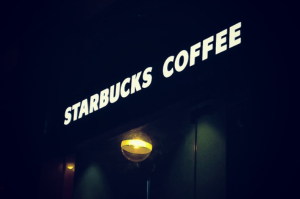The Point: At Zeroing Agency, we recognize the crucial role pricing plays in business strategy. Changing prices is a big decision for any company. So, let’s ask the question: Do price changes guarantee success, or are they a risky move that could mess up profits and customer loyalty? This article dives into the world of pricing, looking at the good and not-so-good sides of changing prices. We’ll also give you practical advice to help your business find the right balance and succeed in this important area…Enjoy!
The Dynamics of Price Changes
Understanding Market Signals
Price changes serve as powerful signals to the market. A price increase can signify quality improvements, exclusivity, or even a reflection of rising costs. Conversely, a price reduction may be interpreted as an attempt to gain market share or offload excess inventory. Careful analysis of the market context and clear communication about the rationale behind price changes can enhance the perception of the brand and its offerings.
Balancing Profitability and Customer Perception
Price adjustments can significantly impact both profitability and customer perception. Data reveals that a 1% increase in price can lead to an 11% increase in operating profits, emphasizing the financial potential of strategic price changes. However, there’s a delicate equilibrium to maintain: a price hike that’s too steep might alienate price-sensitive consumers, while price reductions may raise questions about product quality.
The Calculated Risks of Price Changes
Competitor Responses and Price Wars
In the competitive landscape, the ripples caused by a price change can quickly turn into waves. A sudden price cut might provoke a price war, undercutting margins and reducing industry profitability as rivals rush to match or beat the new pricing. It’s essential for businesses to anticipate competitive reactions and have counterstrategies in place before executing price changes.
Customer Loyalty and Brand Identity
Price adjustments can shake customer loyalty and alter the perception of a brand. A brand known for premium offerings might damage its reputation by slashing prices, leading consumers to question the value they receive. On the other hand, a brand that consistently offers lower prices may risk being associated with lower quality. Striking a balance between maintaining brand identity and addressing market realities is a nuanced challenge.
Measure Price Elasticity
By employing effective methods, companies can gain insights into how changes in prices influence customer demand. Here are six efficient approaches to achieve accurate measurements:
- Segmented Analysis: Group customers by traits to study varied price responses.
- Controlled Experiments: Use A/B tests to observe direct price impacts.
- Historical Data Analysis: Spot patterns in past price-demand relationships.
- Price Sensitivity Surveys: Gather direct willingness-to-buy insights.
- Cross-Price Elasticity: Consider related product price effects.
- Dynamic Pricing Algorithms: Analyze real-time price adjustments.
- Econometric Models: Estimate elasticity with complex models.
- Behavioral Economics Insights: Understand psychological price influences.
- Localized Pricing: Adjust prices per regional nuances.
- Long-Term Analysis: Assess lasting price effects on loyalty and perception.
The Art of Strategic Price Changes
Data-Driven Decision Making
In the digital age, data is the compass guiding successful business decisions, and pricing is no exception. Detailed analysis of customer behavior, segmentation, and historical sales data can provide valuable insights into price sensitivities and purchasing patterns. Armed with this information, companies can tailor price changes to specific customer segments, optimizing revenue without alienating their customer base.
Behavioral Economics and Psychological Pricing
The intersection of behavioral economics and pricing psychology yields invaluable strategies. Techniques like charm pricing, where prices are set just below a round number (e.g., $9.99 instead of $10.00), leverage the human psyche’s response to perceived value. Moreover, offering tiered pricing options and bundle deals can influence purchasing decisions, boosting revenue while providing consumers with perceived value.
Dynamic Pricing: Adapting to Real-Time Demand
The digital landscape has given rise to dynamic pricing, a strategy that enables businesses to adjust prices in real-time based on demand, supply, and even competitor pricing. This approach, successfully adopted by industry giants like Amazon, allows businesses to capitalize on peak demand periods and optimize pricing for different market conditions. However, it requires careful implementation to ensure transparency and maintain customer trust.
Case Study: Starbucks’ Pricing Evolution
Starbucks, the global coffeehouse chain, exemplifies the importance of aligning price changes with evolving consumer preferences. Over the years, Starbucks has expanded its menu to include various beverages, food items, and merchandise. This diversification allowed Starbucks to adopt tiered pricing, catering to different customer segments with varying price sensitivities.
Starbucks faced a challenge in the mid-2000s when the global recession prompted many consumers to seek more affordable options. The company responded by introducing lower-priced offerings and limited-time promotions, striking a balance between quality and affordability to retain its customer base during tough economic times.
Starbucks’ approach to pricing also demonstrates the importance of tailoring strategies to local markets. The company adapts its pricing to suit different countries and regions, accounting for varying economic conditions, cultural norms, and competitive landscapes. This localization strategy has helped Starbucks maintain a strong presence and competitive edge globally.
SUMMARY
In the ever-changing landscape of business, price changes are an essential tool for maintaining competitiveness, maximizing revenue, and sustaining profitability. By understanding market dynamics, responding to cost fluctuations, and navigating the challenges associated with price adjustments, organizations can strike the delicate balance between customer satisfaction and financial success. As businesses continue to adapt to evolving consumer behaviors and market conditions, the ability to strategically implement price changes will remain a crucial skill, enabling organizations to thrive in the face of uncertainty and secure their positions as leaders in their respective industries.
Sam Palazzolo, Managing Director @ Tip of the Spear Ventures

